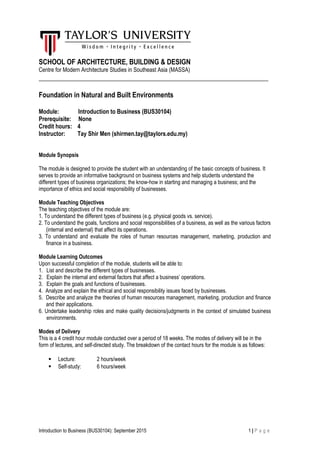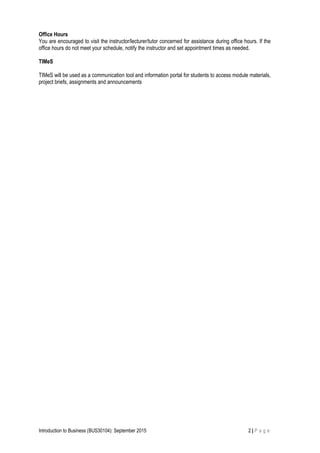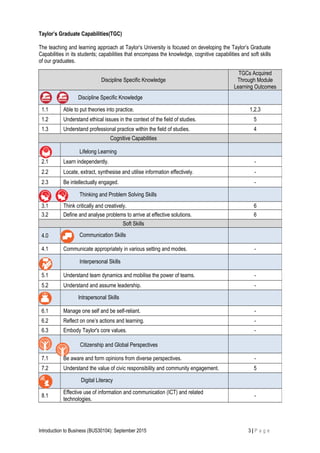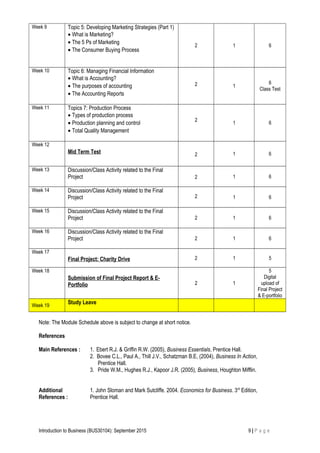This document provides information about an Introduction to Business module offered at Taylor's University. The 4-credit, 18-week module is designed to give students an understanding of basic business concepts including different types of businesses and how internal and external factors affect operations. Students will learn about the goals, functions, and social responsibilities of businesses. Assessment involves formative assessments like discussions and summative assessments like exams. The module uses student-centered learning approaches like group work and presentations.









